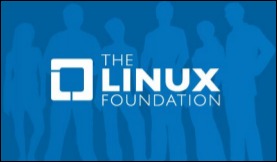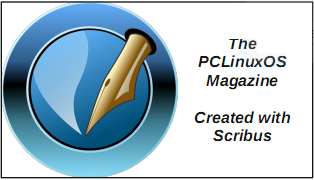| Previous
Page |
PCLinuxOS
Magazine |
PCLinuxOS |
Article List |
Disclaimer |
Next Page |
"mylive-install" Help Guide Now Available In 13 Languages |
|
by David Pardue (kalwisti) As of July 2023, PCLinuxOS releases ship with the "mylive-install" installer (aka 17g installer) rather than the old "draklive-install" which was the default for many years. To help both newcomers and experienced PCLinuxOS users, I wrote an illustrated guide which walks through the installation steps. This was posted in the "Tips and Tricks" section of the forum, and a more detailed overview was published in the September 2023 issue of The PCLinuxOS Magazine. Beginning with the 2023.08 official releases (KDE, KDE Darkstar, MATE and Xfce), Texstar includes a Help file, named "Install-help" (in PDF format) on the Live desktop for reference. "Install-help" is an updated version of my guide with editorial improvements, courtesy of tbs (Torsten).  (PCLinuxOS Community Releases, such as Trinity Big Daddy, Openbox and LXQt, do not include "Install-help" by default.) For the benefit of our international users who might not be comfortable reading English, I thought it would be worthwhile to translate the Help Guide into various foreign languages represented in the "International" section of the PCLinuxOS Forum. I produced draft translations using a combination of DeepL Translator, Google Translate (GT) as well as my familiarity with assorted languages. Next, I posted links to the draft translations and asked for volunteers to revise the documents. Fully Revised Five collaborators responded to my request, and they graciously corrected mistakes and offered stylistic improvements. I appreciate their language skills and community spirit. The seven translations below (ranked in descending order of forum activity) have been fully revised:
French: https://www.pclinuxos.com/forum/index.php/topic,160350.0.html
Dutch: https://www.pclinuxos.com/forum/index.php/topic,160280.0.html
Polish: https://www.pclinuxos.com/forum/index.php/topic,160278.0.html
German: https://www.pclinuxos.com/forum/index.php/topic,160281.0.html
Spanish: https://www.pclinuxos.com/forum/index.php/topic,160283.0.html
Portuguese (Brazilian): https://www.pclinuxos.com/forum/index.php/topic,160282.0.html
Catalan: https://www.pclinuxos.com/forum/index.php/topic,160329.0.html In Need of Revision The draft translations below have not yet been revised. If you are a native speaker of one of these languages and would like to help your compatriots, please take out your red editor's pencil and correct any mistakes that you find! Italian: https://www.pclinuxos.com/forum/index.php/topic,160324.0.html Czech: https://www.pclinuxos.com/forum/index.php/topic,160279.0.html Swedish: https://www.pclinuxos.com/forum/index.php/topic,160347.0.html Danish: https://www.pclinuxos.com/forum/index.php/topic,160345.0.html Norwegian: https://www.pclinuxos.com/forum/index.php/topic,160362.0.html Finnish: https://www.pclinuxos.com/forum/index.php/topic,160348.0.html Brief Comparison of DeepL and Google Translate As a language buff, I enjoyed working on this project. It gave me a chance to experiment with machine translation (MT), which has significantly improved in the last few years – although it is nowhere near achieving the utopia of "perfect universal translation." Based on my (unscientific) experience, DeepL Translator produced slightly more accurate and "natural-sounding" results than Google Translate (GT). Although GT's translations were good overall, it seemed that they required more post-translation editing. DeepL (https://www.deepl.com/en/translator) was launched in 2017 as a service exclusively for European languages. It currently covers around thirty languages and is still Eurocentric (although it does offer Chinese, Japanese, Korean, Indonesian and Turkish). DeepL was developed by a Cologne-based team of approximately twenty people. It uses a neural machine translation (NMT) model trained on manually translated text. One of DeepL's advantages is that it draws from Linguee's massive corpus of human-translated sentences, idioms and text snippets. (Linguee [https://www.linguee.com/] is an online concordance that searches for translations on the Internet.) Another benefit of using DeepL is that if you know both your target language as well as your source language, DeepL allows you to tweak / change the translated output. If you create an account and sign up for their Free version, you may translate three uploaded files per month. (The file format is limited to .pdf, .docx or .pptx with a file size limit of 5 MB.) However, DeepL is not flawless; I found that when I uploaded the Help Guide, it sometimes "forgot" parts of sentences. So you must carefully check the translated output. Google Translate needs no introduction, as it is the most popular machine-translation tool. It was created in 2006 and currently covers over one hundred thirty languages. In 2016, GT switched to an NMT model. It uses a mix of digital resources for its sources. (GT's original database drew heavily on the Europarl Corpus, a collection of human-translated documents from European Parliament proceedings.) Google Translate can translate uploaded files – in .docx, .pdf, .pptx or .xlsx format – without requiring you to create an account. Unlike DeepL, GT can translate websites, provide pronunciation help and supports image translation (for thirteen languages). If you use Google Chrome, GT has the convenience of fully integrating with the browser. If you would like to take a deep dive into Google Translate, I will recommend Martin Benjamin's fascinating Teach You Backwards: An In-Depth Study of Google Translate for 108 Languages [2019] (https://www.teachyoubackwards.com/). Dr. Benjamin is an anthropologist who has been involved with lexicography and language technology since 1994, when he launched the Kamusi Project, using what would come to be called crowdsourcing as a tool for compiling lexicographic data in the Internet Living Swahili Dictionary. Kamusi is the Swahili word for 'encyclopedia' or 'dictionary', and grew into the world's most-used resource for the Swahili language, with more than 60,000 entries and over a million lookups per month. Kamusi also includes other African languages. One caveat to keep in mind: With their free version, both GT and DeepL retain the history of the text being translated. So you probably should not use these services to translate confidential and/or customer information. In conclusion, if you need a free translation service, I can offer the following suggestions. First, use both GT and DeepL (if possible), and compare their results. Second, use both services with caution. Third, it is preferable that you have some knowledge of the target language (if possible). Fourth, tweak your own words; avoid using slang and/or highly idiomatic phrases. Fifth, if possible, have the results vetted by someone who knows both languages. Sixth, include a disclaimer. Let your recipient know that you have used machine translation, and include your original English text (for reference purposes). For additional recommendations, see Martin Benjamin's "When & How to Use Google Translate," Teach You Backwards (March 30, 2019), https://www.teachyoubackwards.com/how-to-use-google-translate/. |





